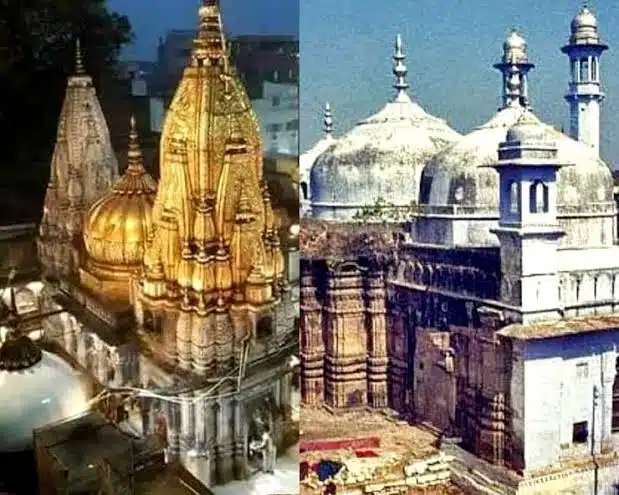Gyanvapi case History
In the verdict on 14 October, the District high court in Varanasi; Justice A.K.Vishvesha rejected the plea seeking carbon dating of the ‘Shivling’ abiding the supreme court’s order to keep the area around the disputed structure to remain sealed.
India is a land of a variety of cultures mutually existing together for years. The Preamble of the Indian constitution includes the word ‘secular’ which means that the state will not have any state religion and have a policy of tolerance towards people from different ethnic and cultural backgrounds which has sustained the pursuit of unity in the diversity of our country.
Communal tensions are not new to the country, the nation has witnessed numerous communal riots in different parts like Varanasi, and Ayodhya to name a few. The spirit of pluralism reunited the people in such times of distress.

Varanasi is one of the oldest living cities in the world, with numerous temples in its heart like the famous Kashi Vishwanath temple, where the Hindus and the Muslims worship their prayers cheek by jowl. The Gyanvapi mosque is believed to be constructed under the ruins of the Vishwanath temple which was demolished by the orders of the Mughal emperor, Aurangzeb in the late 16th century.
This holy place has now become a site of dispute where a bunch of Hindus filed a petition asking for access to worship behind the mosque shrine. A controversial order of the court allowed a video-recorded survey of the mosque which revealed a stone shaft, a symbol of the ‘Shivling’ while the Anjuman Intezamia Masjid Committee claimed to be a fountain.
Belief is a word which emphasises the absence of a particular fact, for instance, nobody believes in the presence of the sun, moon, and other celestial objects but they believe in the godly powers of these. Such is a religious belief which often cannot be supported by suitable logic but has a fanaticism associated with it, they have their emotions and values attached to a place or an object.
These beliefs may be rational or irrational but form the grounds of cultural conflicts, such as the case of the Gyanvapi mosque. The Places of worship Act enacted in 1991 disallows the conversion of any place of worship and preserves its religious character as it existed on 15 August 1947. The Archaeological Survey of India has pointed out that the Mughal reign was an era of demolition of many Hindu temples, the Vishwanath temple is believed to be very grand in a structure consisting of a central sanctum and eight pavilions, half dismantled became the base of the famous Gyanvapi mosque.
Such incidents have been a part of Indian as well as world history where churches and mosques were demolished in different countries.
The tussle between the Hindus and the Muslims continues to persist with numerous petitions and PIL being filed by the Hindu and Muslim groups demanding their rights to worship in the disputed place. With the decision to prevent any carbon dating of the disputed stone shaft to prevent and preserve it as 5he chemicals used in the process will affect its natural composition, the court has just delayed the emergence of another set of conflicts. It will be interesting to witness the further set of unfolding events.


Read More: Best 7 Small Indie brands we need to recognize











